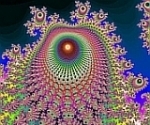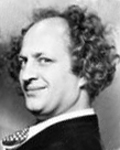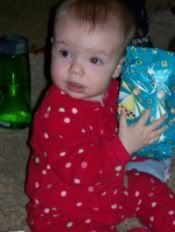StillAnotherGuest wrote:Snoredog wrote:StillAnotherGuest wrote:
Without ballistocardiography or forced oscillation technique, how does it know they are central events? All that thing sees is a straight line.
SAG
I wasn't describing HOW "it" did it,
I was describing what the machine SEEN based upon Doug's 10/1 Encore report. My interpretation was the Machine seen some events as obstructive and others as central, those seen as central caused machine to go from Patient triggered breathing to Machine triggered breathing as evidenced on the report by going to BPM mode, which they describe on this machine as backup mode in which its only function described in that mode is to control central dysregulation. If you subscribe to mfg. titration protocol that mode has a slower -2 BPM rate compared to Spontaneous BPM rate.
How does it know it is central? Both events if they occur are displayed the same on the Therapy Flag graph, the only way you know which the machine "seen" is by its response, that being from the report was going to BPM mode seen as a dip on the Patient Triggered Breathing graph.
My personal opinion is the machine is also looking at the deep inspiration cycle preceding the event since this machine primarily targets Periodic Breathing and it is based upon flow, however they state they use a multi-level algorithm to detect events and various technologies to control breathing, which one I don't know.
StillAnotherGuest wrote:
Can you define specifically which "it" you are referring to in these scenarios? For instance, if
Snoredog wrote:It assumes all obstructive events are taken care of by EPAP.
I stand by that statement, Respironics wouldn't ask you as part of its titration protocol to input the CPAP pressure that
eliminated all obstructive events if it meant otherwise. Since
EPAP pressure is static on this machine, you better
input the pressure that eliminates all obstructive events. So this means this machine is NOT going to respond to frank obstructive apnea period. Then why is "AP" Apnea Period shown on the reports?
Cousin Itt is the bald headed guy in the center, he does resemble Curly a little bit doesn't he?
https://www.youtube.com/watch?v=xL_9zdu4iVw
StillAnotherGuest wrote:
that this "it" is the machine, then "it" would also be intelligent enough to know that Moe and Larry there don't have the smartz between the two of them to operate a fork, so "it" would never make that assumption.
As we know, whenever Moe and Larry can't figure something out they always give it to Curly for the Curly Shuffle. if the machine detects an event resembling an apnea, that apnea has to be either obstructive or central or a combination of both. Since this machine only offers CPAP as baseline support and does NOT have the ability to adjust and respond on the fly therefor machine treats that event as a central by switching to BPM mode. What's going to happen in BPM mode? It is going to use one of the 3 Backup Breath Rate Controls options found in the manual on 3.2.2. In Doug's case that was BPM=Auto, so it is picking up those settings from Spontaneous mode and the timings are therefor automatic.
StillAnotherGuest wrote:
If
Snoredog wrote:It clearly states BPM is only for control of central dysregulation.
that this "it' refers to the manual, that's intended for the operator.
"it" refers to Respironics 2nd bullet point statement found on page 8 of 19 on the Respironics Power Point document with filename:
biap-auto-sv-preso.pdf, which states:
BiPAP®autoSV™treats the central component of SDB with a timed back up rate(automatic or fixed).
StillAnotherGuest wrote:
That means if you don't have "central dysregulation", don't start driving a rate in there, because you will. Given the right settings, you can generate "central dysregulation" in pretty much everybody.
[/quote]
I agree, you can generate central dysregulation in pretty much anybody and the object of this machine is to avoid that CA by controlling respiration. But when it cannot do that automatically possibly due to setup errors it switches to its Backup Breath Rate Controls which is either OFF, Fixed or Automatic. Since mfg. says that this backup mode is for controlling central dysregulation, I don't understand what you mean by "it" generating central dysregulation? It doesn't generate it, it controls central dysregulation by having a slower Respiratory Rate than seen in the automatic Spontaneous/SV mode. That rate (if fixed) is the avg. Spontaneous RR (Breaths Per Minute) minus -2. When you go from 16 BPM's avg in Spontaneous mode to 14 BPM's in backup mode that is going to slow your breathing down. Should also increase flow volumes seen. If you didn't have Centrals why would a patient even be on this machine?
Why would you want to use BPM=Off?
Why would you want to use BPM=Fixed as opposed to say Auto?
I would think that you would want to use BPM=Auto AND if Patient triggered breaths or spontaneous breathing did
NOT quickly return you
resort to fixed settings known to control centrals. This is in the Respironics Titration protocol, if centrals persist, set BPM=10 (or -2 of spontaneous BPM rate), set IT=1.2 (minimum). What are they doing here? Slowing breathing down which resolves Central Dysregulation. Since long deep breaths can also generate central dysregulation, they are controlling inspiration with a fixed Inspiration Time. IT time can be anywhere from .5 to 3 seconds. It can never exceed 3 seconds on this machine.
StillAnotherGuest wrote:
And
Snoredog wrote:It applies PS if it doesn't resolve it goes to BPM, that should also be seen in the report.
cannot happen regardless which "it" was "it". If "it" applied PS, then "it" must have seen a breath, the rate clock would reset and no breath would be sent in. "It" would either continue to escalate IPAP to
max with whatever algorithm and machine is being used in this bird's nest of
[/quote]
Machine targets peak flow on inspiration, if that target is seen NOT being met such as with a hypopnea it will increase PS, this is why if the machine sees a "obstructive" hypopnea it will be eliminated. IF SV side is doing its job correctly HI will be at 1 or less. Any residual HI's seen on report are Central (assuming IPAP working pressure didn't bump into IPAP Max to skew that result).
If that hypopnea was central, there is NO inspiration, machine won't see that partial inspiration, the inspiration timer value will exceed the maximum time of 3 seconds and machine will trigger a breath (BPM mode). So when observing an Encore report and you see an HI, it will most likely be a central hypopnea. To confirm if that was what the machine saw, there will be a corresponding dip in the Patient Triggered breath graph.
The only options here are Patient Triggered Breaths and Machine Triggered Breaths. Machine Triggered Breaths are ones where you are NOT breathing.
I see this machine as 3 machines in one.
Machine 1: The first machine is Moe and Larry, they are CPAP baseline support (i.e Fixed EPAP, it is assumed Moe and Larry are going to keep the baseline CPAP pressure that eliminates ALL obstructive events like the mfg. titration protocol says it should). If you know what that pressure is either from a lab titration or CPAP, you input that pressure for EPAP. Once you do that, Moe and Larry will keep the compressor running and spend the rest of the time be bopping themselves in the head and poking out each others eye. No more obstructive apnea! yeah!
Machine 2: Machine 2 is (the SV side), it provides Pressure Support by having an Automatic control of IPAP set to function within a Minimum and Maximum range. If everything is set correctly, the multi-layered algorithm never fails it will control irregular and periodic breathing on a breath-by-breath basis by targeting peak flow. It will use target flow values based upon its prior sampling of spontaneous breathing on a moving 4 minute average. Since that same prior breathing "sample" may also be bad, its Automatic Servo Ventilation mode is not expected to be perfect. If this machine is doing its job and controlling breathing it should never advance from here. But the mechanical device is not perfect and humans are not all the same. So its developers along with others found that if you slow down a persons Respiratory Rate and breathing that you can manipulate Respiration and eliminate Central dysregulation. So if the Automatic SV algorithm happens to screw up and the patient still goes into central dysregulation what do you do? You send them over to Curly, he's not as bright as Moe and Larry, so he has only a part-time job as backup.
Machine 3: Machine 3 is Curly, he temporarily does Moe and Larry's job by taking over their baseline CPAP support. He also takes over part of machine 2's job but he is going to do #2's job at a fixed slower rate. IPAP working pressure is going to return to IPAP Min setting (it can only last 3 seconds max.). So Curly will have EPAP and IPAP Min, that may be CPAP if IPAP Min is the same, it may be BIPAP depending on delta between EPAP and IPAP Min. IF Machine's 2's RR was seen at 16, Curly will remove his socks and count backwards 2 toes to 14, if Machine 2 had an avg. IT timer of 1.8, Curly will have an IT time of 1.8. Peak and tidal volumes don't mean anything to Curly, he only has a Mickey Mouse watch he goes by. Curly is going to take that BPM rate and use the IT time to establish how long he should allow Inspiration. He's gonna take that BPM rate, divide it by avg BPM and come up with the timings for breath duration, subtract the IT time from it and let tidal land where it wants. When spontaneous breathing returns either from Curly's help in slowing it down or on its own, Curly will go Woop Woop Woop and hand it back to Moe and Larry and Machine 2.
The Curly Shuffle:
https://www.youtube.com/watch?v=AUwtaQ1 ... re=related
That's the way I sees it with a little common sense applied in the middle.
someday science will catch up to what I'm saying...













